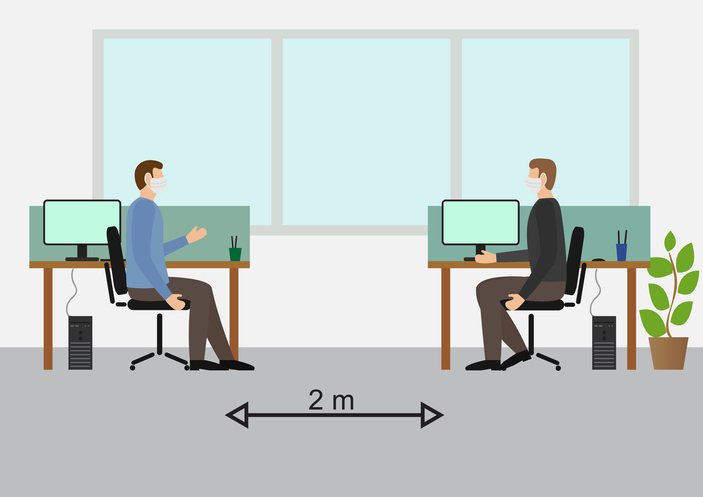How staggered shifts can help your business through COVID-19
With lockdown measures lifting but social distancing still in place, many businesses will need to dramatically adjust their practices to get staff back into the office. Alan Price of BrightHR explains why you may want to consider a staggered shift approach.

What is a staggered shift pattern?
A staggered shift pattern is where a business plans for employees to start, and finish, work at different times. Typically, they involve staff working the same hours as normal, but with a change in their structure.
During the coronavirus pandemic, staggered shift patterns could be an essential approach, as they can help you control social distancing and infection risk with employees arriving to work at different times.
How can a staggered shift pattern can help with social distancing?
A staggered shift pattern could be crucial when it comes to the two-metre rule for social distancing, with the government actively encouraging businesses to consider it. It’s particularly important if you’re in the retail industry, have a bar or restaurant, or run an office.
If you have a lot of employees, or they work in an enclosed working area, then a staggered shift pattern can have plenty of advantages:
- staff and employers will have fixed working hours, allowing for easier planning
- the approach will help avoid traffic in your workplace, particularly during peak hours, so there will be no crowding onto lifts or queues in the canteen
- in a quieter workplace, you can monitor your health and safety procedures more effectively
- it’ll ease pressure on employees, many of whom will feel nervous about their return to work
In short, staggered shift patterns mean you’ll have more control over how your business functions. It may seem odd, but in effect, the fewer employees you have at work, the better you can manage the situation. And that can help your productivity, as well as minimise the risk of infection.
How does a staggered shift pattern work?
There are many ways you can implement a staggered shift pattern, and much if it will depends on the size of your workforce and workplace. However, there are certain structures you can follow. For example:
- The 5/4/9 plan is a ‘compressed’ work schedule. Each full-time employee works eight 9-hour days and one 8-hour day for a total of 80 hours in a two week period. This leaves one day out of the office every fortnight.
- The 4/10 schedule basically means staff work a 10-hour day over four days during a working week. That could lead to a three-day weekend for employees as a result.
- The 4-week cycle is where your team works two consecutive shifts, then has two days off, then three days back on, then a final two days off. That then heads around in a rotating fashion, making for an unusual structure but one that provides you with room to control the coronavirus outbreak.
Should I use a staggered shift pattern after coronavirus?
Ultimately, using a staggered shift pattern will depend on your specific business needs and what you think will work best. But it’s important to remember that while these aren’t standard shifts, they can help you to limit the threat of coronavirus.
You must also take all the other steps you can to support your employees. UK government advice may change in time, so stay alert for updates.
About the author
Alan Price is a HR expert and CEO at BrightHR, a HR software and support firm offering cloud-based software which records employee absences, responds to annual leave requests, and creates shifts and rotas.
See also
How can you manage employee loneliness when working from home?
How will the workplace look after the lockdown?
Find out more
Working safely during coronavirus (COVID-19) (GOV.UK)
Image: Getty Images
Publication date: 19 June 2020
Any opinion expressed in this article is that of the author and the author alone, and does not necessarily represent that of The Gazette.
